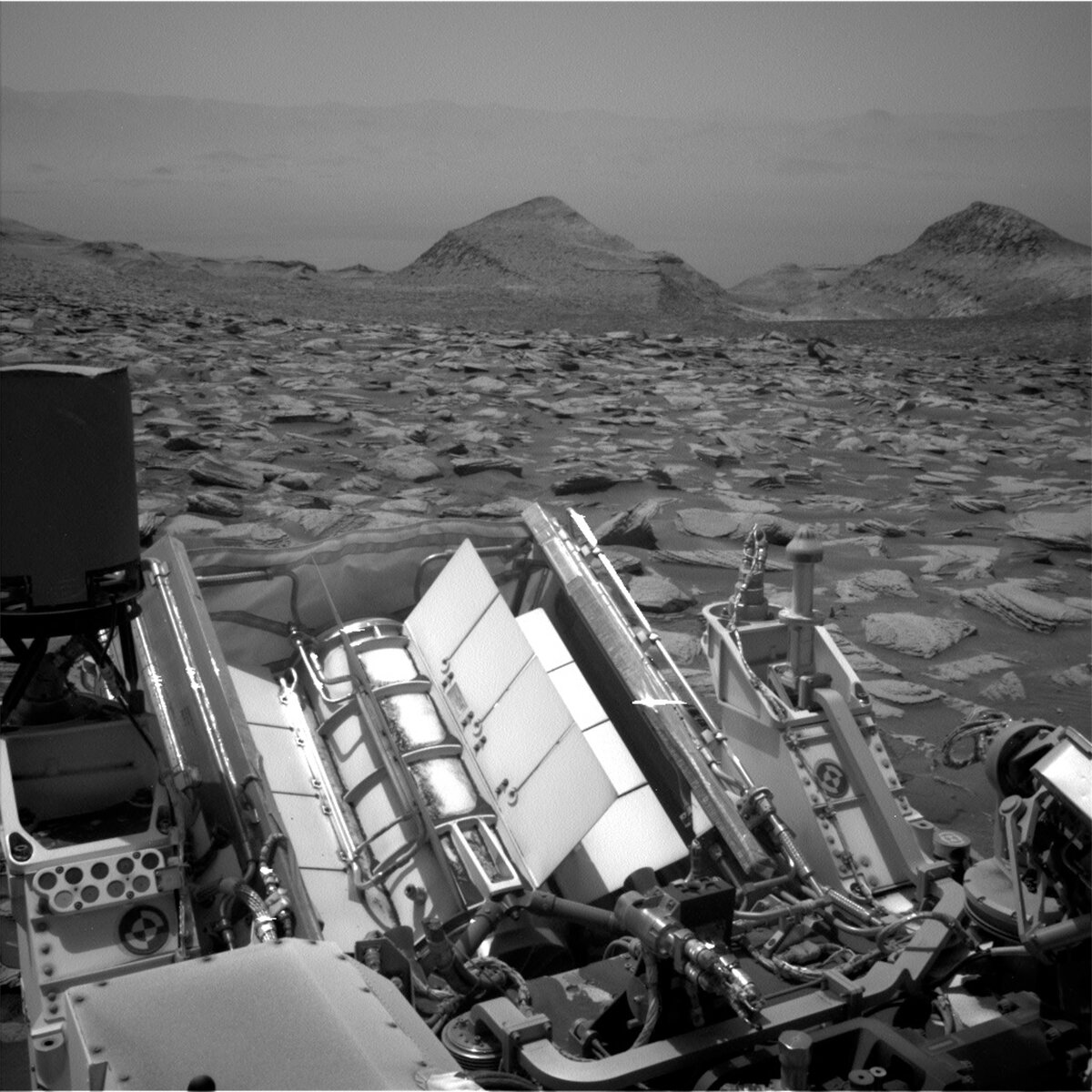Earth planning date: Friday, January 5, 2024
Coming back after the new year celebrations it was my first Curiosity planning as Geology Science Team Lead (GeoSTL) today. Of course, I hoped for an easy start… but somehow, everything seemed to have other ideas! First things first, we didn't have some of the usual images available on the system we use for planning. This was resolved swiftly by the engineers, but of course, even swift magic takes some time. With limited images on the system, everything gets slower. As the GeoSTL, it is on me to watch out for the timing and what colleagues from the instrument teams can and cannot do in such a situation, which was at first just: wait. The fabulous team sprung into action the very moment we had all the images available, and we made it to the finish line in time with an exciting plan.
But halfway through our planning, we learnt that not just our systems were a bit temperamental, also Mars had other ideas. A crushed rock under one of the wheels left the vehicle unstable. Hence, we could not risk putting the arm out, and APXS and MAHLI get a break. That prompted another delay in our planning as we paused for discussion, if we wanted to drive off to the next location anyway, or if the target in front of us is important enough to just wiggle the rover — rover drivers call this a bump — to get off the offending rock. After intense discussion, we decided to stay at the target. So, next week's team will have a familiar workspace in view!
That doesn't mean Curiosity can be dozing off, as there is plenty to do for the other instruments! ChemCam has two LIBS targets one called "Temple Crag" and the other "Cirque Crest," which together will give us more insight into the chemistry at this location. ChemCam also has two long distance imaging activities, one on the yardang unit high up on the mountain, and one closer to the rover but along the planned drive path, to see the details of this interesting area. If you look closely at the images we have, you'll see blade-like features, cracks in the rocks, and of course the layering and lamination that accompanies us for most of the mission. Here is a good example of the many things we see in the scene. Plenty to image!
Mastcam has a variety of mosaics in the plan, looking at all these diverse features in colour and great detail, too. In total there are three major Mastcam activities, which serve to expand the workspace and understand the path ahead. Of course, there is also plenty of other activities, including looking at water in the underground with a DAN passive observation, atmospheric observations, and of course data management. It's easy to forget that those data management and ‘get data' activities happen, unless they don't of course, because without them we can't see what the rover was doing. So, plenty to do for Curiosity, even without the option to do APXS and MAHLI.
For our team, it was a historic day, though, as one of our members estimated she was celebrating her 4000th planning sol, while at the same time we had a member of the team serving in a new role for the first time! Congratulations to both! And thinking of history, I am sure those colleagues (and there are a few, at least one of them also on today's planning), who started their Mars rover operations career on the Mars Exploration Rover Spirit will remember 20 years (and one day) ago: Spirit landed on Mars on the 4th of January (UTC) 2004. I will remember the landing party… from a distance and as a fan! Go, Spirit, go!
Written by Susanne Schwenzer, Planetary Geologist at The Open University
from NASA Mars Rover Curiosity: Mission Updates https://ift.tt/kPyIGCN

Comments
Post a Comment